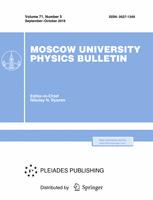The main calculated parameters in the processing of full waveform acoustic data are the propagation velocities of elastic waves. The determination of velocities is based on the arrival times of these waves. At the same time, the geological environment also affects the amplitude-frequency response (AFR) of elastic waves. In general, wave attenuation is caused by three processes: geometric divergence, scattering by inhomogeneities, and inelastic absorption. It is known that oil and gas saturated media have a larger absorption coefficient in comparison with water-saturated and dry media. However, usually amplitudes are affected by random noise and interference of waves, as well as by noise caused by heterogeneity of source and receiver conditions (for example, by changing the borehole diameter and transmission coefficient, by the presence of diffraction points and clay crusts). Therefore, old three-element acoustic logging devices did not allow to reliably iterpret information from AFR of waves and the standard software did not have the means of its calculation. Modern multi-element devices, as a rule, have several sources and a lot of receivers. That provides favorable conditions for the application of already existing methods of calculating the effective damping coefficient, and the development of new approaches. In this paper we consider a method for calculating the coefficient of effective damping which is the sum of inelastic absorption and scattering by inhomogeneities. The method is based on factorial decomposition of the wavefield and it excludes the effect of inhomogeneity of the source and receiver conditions.
$^1$Санкт-Петербургский горный университет



